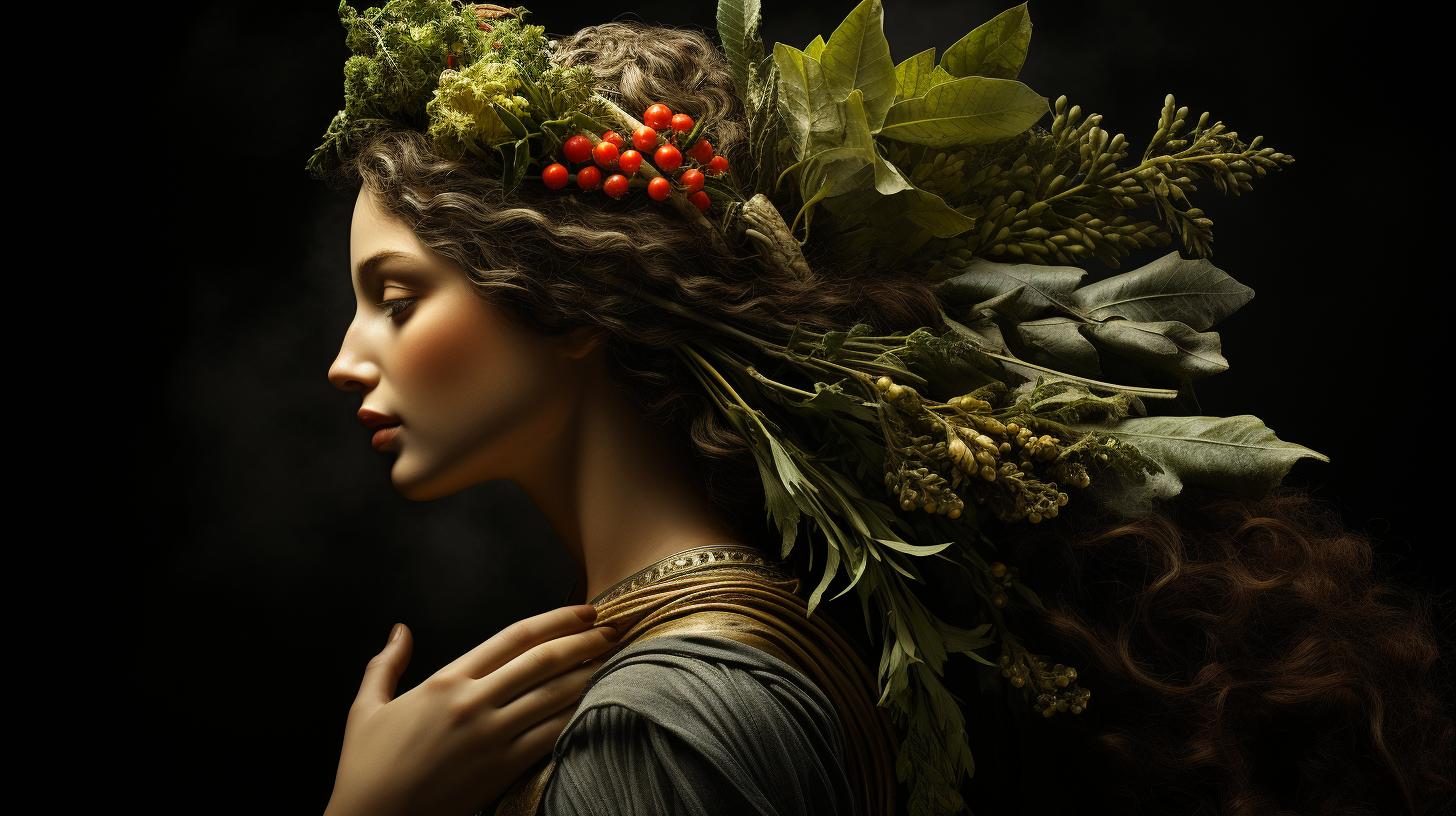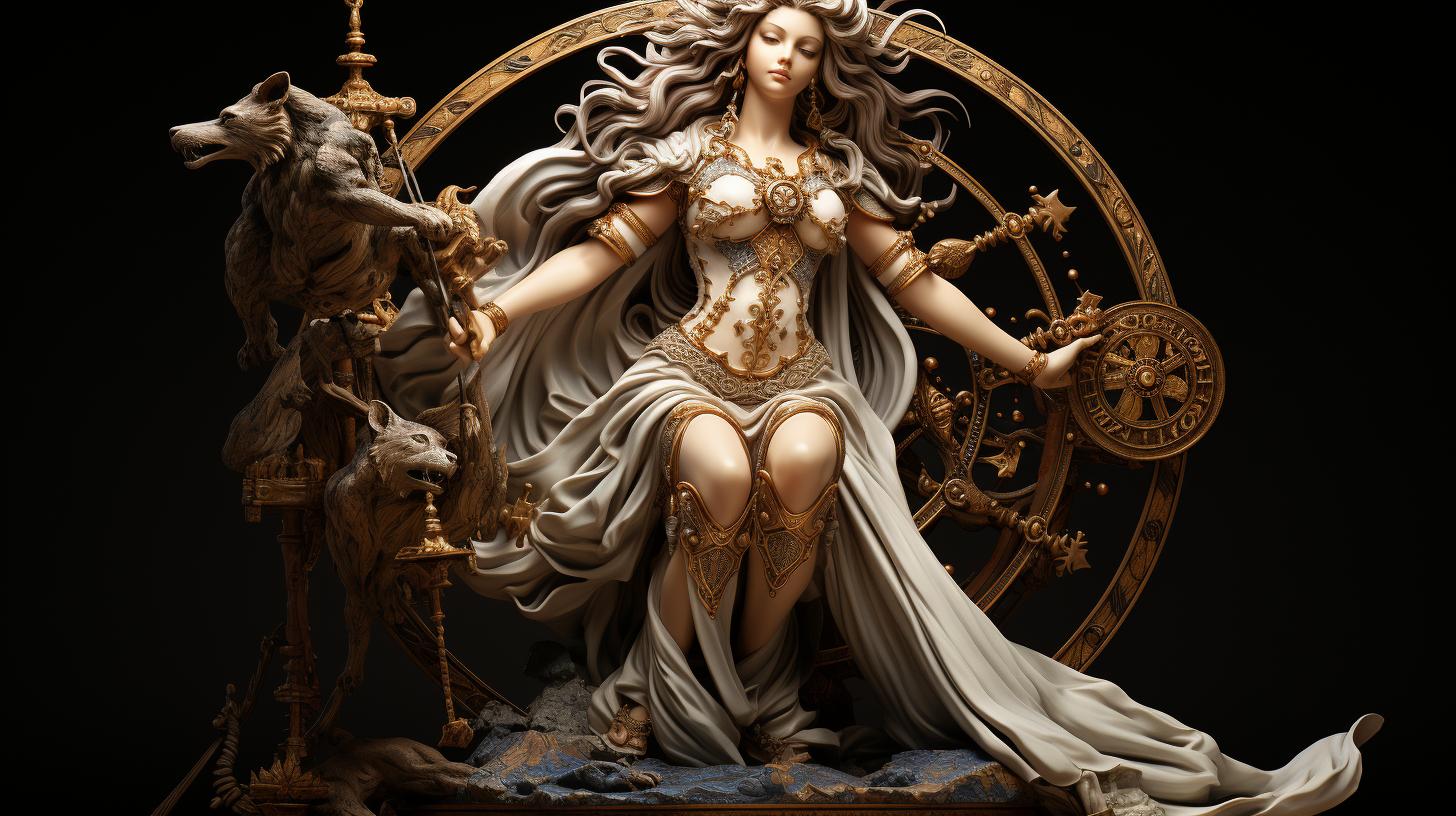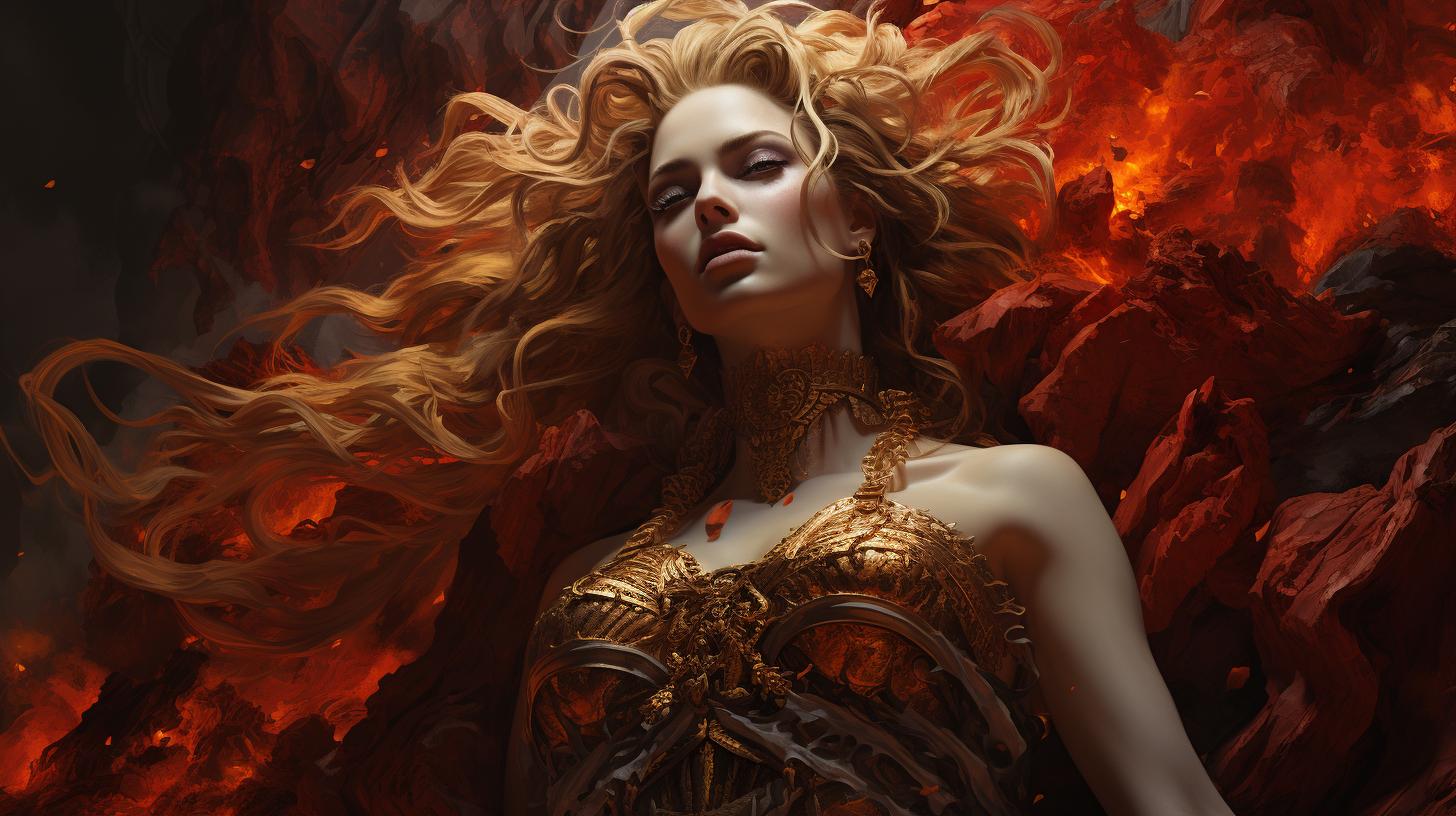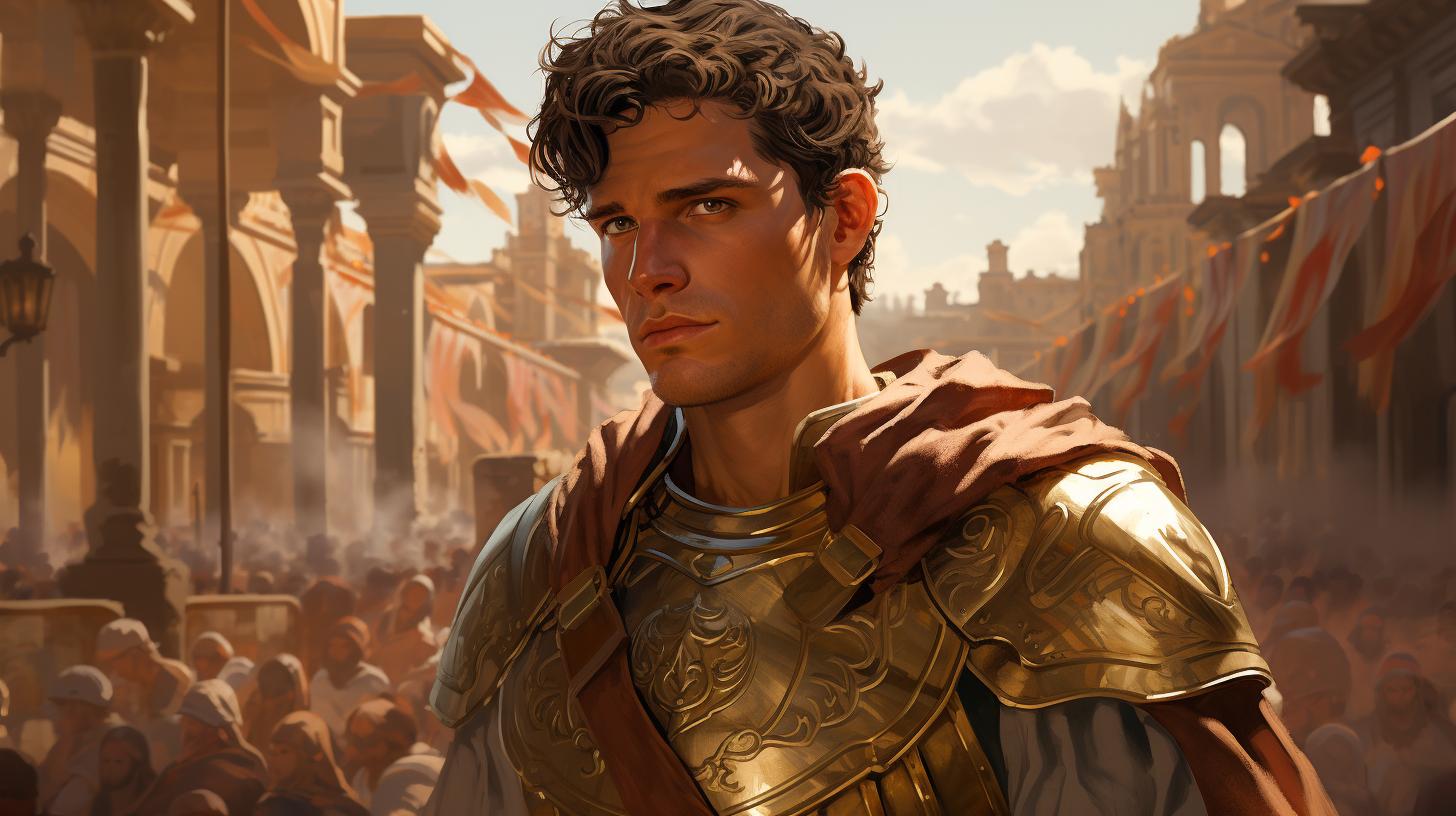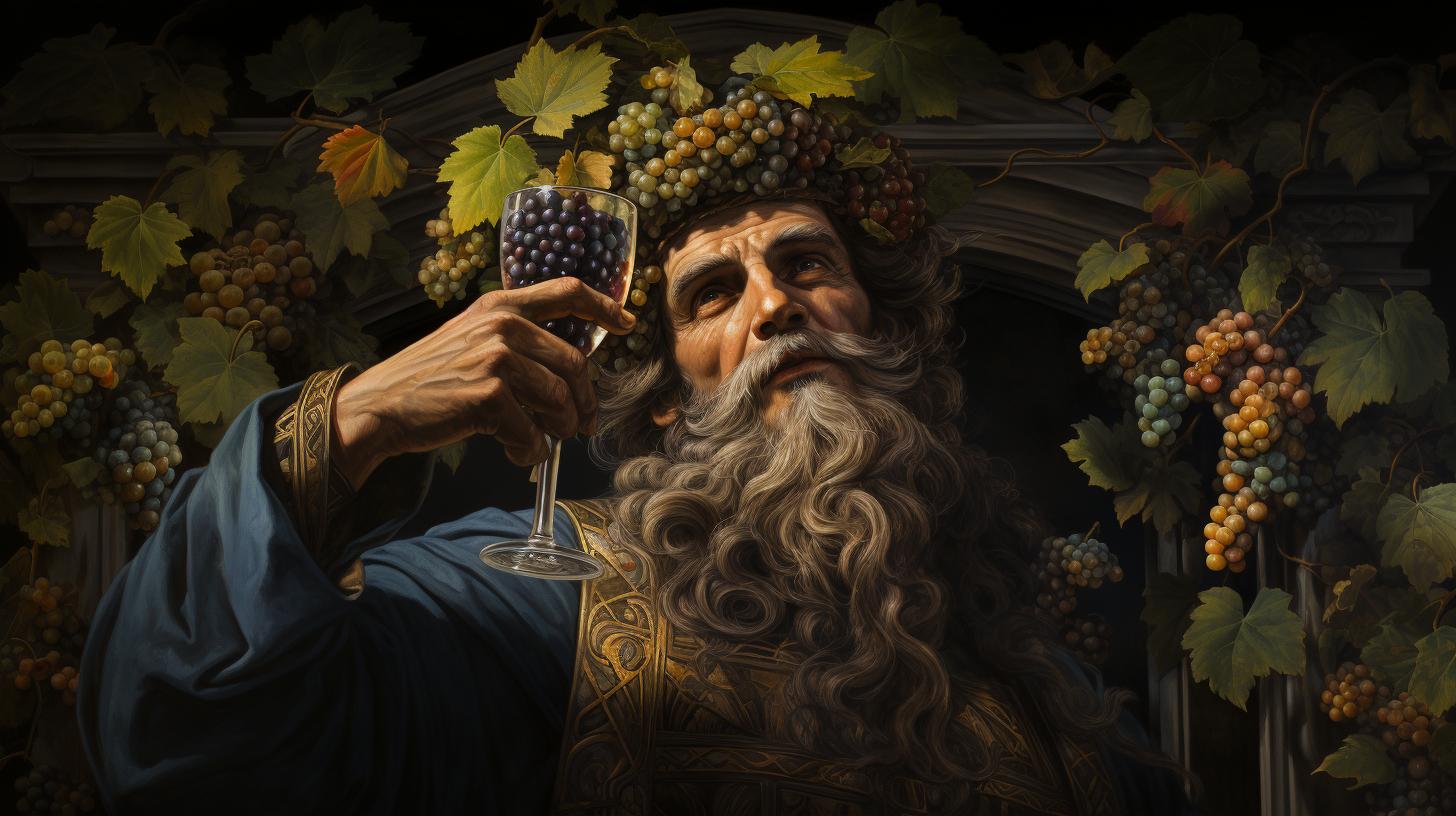Concordia Goddess: The Symbol of Harmony and Unity in Roman Religion

The Concordia Goddess, revered in Roman religion, symbolizes harmony and unity. With her temple located in the heart of the Forum Romanum, Concordia played a significant role in promoting reconciliation between the patrician and plebeian classes.
Associated with symbols of peace, such as the olive branch and the cornucopia, the goddess embodied devotion to family and hope. Festivals like Caristia were celebrated in her honor to reconcile disputes and mend familial relations.
In Greek mythology, Harmonia, a related deity, carried a similar concept of harmony. Understanding Concordia Goddess sheds light on Roman society and its pursuit of concord.
The Concordia Goddess: Exploring the Symbol of Harmony and Unity
The Concordia Goddess holds great significance in Roman religion, representing the ideals of harmony, unity, and agreement. Through her worship, the Romans sought to foster a sense of peace and concord within their society.
Exploring the origins and symbolism of the Concordia Goddess provides valuable insights into the cultural and religious beliefs of ancient Rome.
The Roman Temple of Concordia Goddess in the Forum Romanum.
Centrally located in the Forum Romanum, the Roman Temple of Concordia Goddess stands as a testament to the importance placed on maintaining harmony. Constructed by Camillus in 367 B.C., it was devoted to promoting unity and agreement among the Roman citizens.
The temple’s notable feature was the presence of a statue of Victoria on its roof, representing victory and triumph.
Other Temples Dedicated to Concordia Goddess in Rome.
Apart from the temple in the Forum Romanum, the Concordia Goddess was also revered in other sanctuaries. The Arx Capitolina housed another temple dedicated to her, focusing on reconciliation between the privileged patrician class and the common plebeians.
Additionally, there were plans for the construction of another temple called Concordia Nova in honor of Julius Caesar, but these intentions were disrupted by his assassination.
Association of Concordia Goddess with Peace and Reconciliation.
The representation of the Concordia Goddess as a veiled, maternal figure, adorned with the attributes of an olive branch and cornucopia, symbolized her association with peace, hope, and abundance. She was often linked with the stork, dove, and star, which embodied familial devotion, tranquility, and aspiration, respectively.
The Concordia Goddess in Greek Mythology: Harmonia‘s Connection.
While there are similarities between the Concordia Goddess and the Greek deity Harmonia, they belong to distinct religious traditions. Harmonia, the daughter of Ares and Aphrodite, also represented harmony and concord in Greek mythology.
However, her story was marred by tragedies, such as the ill-fated necklace that brought misfortune upon her descendants.
Comparing Concordia and Harmonia: Similarities and Differences.
Although Concordia and Harmonia share common themes of harmony and unity, their cultural contexts and mythologies differentiate them. Concordia’s worship and influence focused primarily on Roman society, while Harmonia‘s significance remained within Greek mythology.
Understanding their distinctions allows for a deeper appreciation of the uniqueness each figure holds in their respective religious traditions.
The Tragic Tale of Harmonia in Greek Mythology.
Harmonia‘s story is infused with a series of tragic events, including her ill-fated marriage to Cadmus and the cursed necklace she received as a gift. These misfortunes resulted in a long-lasting cycle of despair for her progeny.
Harmonia‘s narrative serves as a cautionary tale, contrasting with the ideals of harmony and unity embodied by the Concordia Goddess.
Representations and Symbolism of Concordia Goddess.
The Concordia Goddess was often depicted as a veiled woman, symbolizing her maternal nature and mysterious presence. Her attributes, including the olive branch and cornucopia, conveyed messages of peace and abundance.
These symbols attest to her transformative power, bringing harmony and concord to individuals and society as a whole.
Symbolism of the Olive Branch, Cornucopia, and Other Symbols.
The olive branch, a universal symbol of peace, was closely associated with the Concordia Goddess and represented her ability to reconcile conflicts. The cornucopia, a horn of plenty, symbolized abundance and prosperity, further embodying the essence of harmony and unity.
Other symbols linked with Concordia, such as the stork, dove, and star, evoked ideals of familial devotion, tranquility, and hope, creating a comprehensive visual representation of her divine attributes.
Continued on Part 2: Festivities and Celebrations in Honor of Concordia Goddess
Origins and History of the Concordia Goddess in Roman Religion
The Concordia Goddess holds a significant place in Roman religious practices, embodying the ideals of harmony and unity. In this section, we will explore the origins and historical context surrounding the worship of the Concordia Goddess.
The Roman Temple of Concordia Goddess in the Forum Romanum
One of the most prominent landmarks related to the Concordia Goddess is the Roman Temple located in the Forum Romanum. Built in 367 BC by Camillus, this temple served as a focal point of worship and devotion.
Its architectural grandeur reflected the importance of Concordia in the Roman society of that time.
The Temple of Concordia housed a remarkable statue of Victoria on its roof, symbolizing victory and triumph. Over the years, the temple underwent several restorations and became a museum, showcasing renowned artworks.
Other Temples Dedicated to Concordia Goddess in Rome
In addition to the temple in the Forum Romanum, several other temples were dedicated to the Concordia Goddess across Rome. One notable example is the temple on the Arx Capitolina, where the reconciliation between the patrician and plebeian classes was honored.
Furthermore, there were plans to construct a temple called Concordia Nova in honor of Julius Caesar. Unfortunately, his assassination disrupted those plans, preventing the completion of the temple.
Association of Concordia Goddess with Peace and Reconciliation
The Concordia Goddess symbolized peace, harmony, and the restoration of concord among individuals and society as a whole. The olive branch she carried represented peace, while the cornucopia symbolized abundance and prosperity.
The Concordia Goddess was often associated with the stork, the dove, and the star, representing familial devotion, peaceful coexistence, and hopeful aspirations, respectively.
Festivals such as Caristia were celebrated in her honor, providing an opportunity for families to come together, reconcile differences, and mend disputes. These festivities played a crucial role in fostering unity and concord within Roman families.
The worship and veneration of the Concordia Goddess left a lasting legacy in Roman society, with believers attributing her powers to bring harmony and concord to relationships and families.
It is worth noting that while there are similarities, Concordia and Harmonia, a Greek goddess associated with harmony, are considered distinct entities in different religious traditions.
Through exploring the origins and history of the Concordia Goddess in Roman religion, we gain valuable insights into the significance of harmony and unity in ancient Roman society.
Concordia Goddess in Greek Mythology: Harmonia‘s Connection
The ancient Greek mythological figure, Harmonia, shares intriguing similarities and connections with the Roman goddess Concordia. Let us explore these parallels and delve into the tragic tale associated with Harmonia.
Comparing Concordia and Harmonia: Similarities and Differences
Both Concordia and Harmonia symbolize the virtues of harmony and unity in their respective cultures. Concordia, worshipped by the Romans, embodies the concept of agreement and peace. Harmonia, on the other hand, is a prominent figure in Greek mythology, known as the daughter of Ares and Aphrodite.
Their common attribute of personifying harmony binds them together, despite their distinct origins and traditions. While Concordia primarily represents societal concord and family reconciliation, Harmonia‘s influence in Greek mythology is more complex.
She embodies the harmonious blending of conflicting elements such as war and love, symbolizing the balance between seemingly opposing forces.
The Tragic Tale of Harmonia in Greek Mythology
The story of Harmonia in Greek mythology is marred by tragedy and misfortune. One of the most notable aspects is the cursed necklace bestowed upon Harmonia as a wedding gift, which brings eternal suffering and misfortune to her descendants.
The necklace, created by the divine craftsman Hephaestus, seems to symbolize how even the pursuit of harmony can lead to unforeseen consequences. Harmonia‘s life is intertwined with significant events in Greek mythology, including her marriage to Cadmus, the founder of Thebes, as well as her children’s involvement in various myths and legends.
Her descendants, such as Pentheus and Erydice, face their own tragic fates, which further emphasize the complexities of Harmonia‘s existence. Ultimately, the tale of Harmonia serves as a cautionary reminder that harmony and unity do not come without their share of challenges and sacrifices.
In Conclusion
The connection between Concordia and Harmonia showcases the universal human desire for peace, agreement, and balance. While Concordia is a revered figure in ancient Roman religion, Harmonia‘s story in Greek mythology demonstrates the inherent challenges and sacrifices that come with achieving true harmony.
Exploring the narratives of these deities offers valuable insight into the intricate complexities of human relationships and the pursuit of concord. Note: This text fragment has been tailored specifically for the requested section ‘3.
Concordia Goddess in Greek Mythology: Harmonia‘s Connection’ and does not include content from other sections or a conclusion.
Representations and Symbolism of Concordia Goddess
The Concordia Goddess, revered for her role in promoting harmony and agreement, was depicted in various forms and carried significant symbolic attributes. Understanding these representations and their symbolism allows us to delve deeper into the essence of Concordia.
Depictions and Attributes of Concordia Goddess
Concordia was often portrayed as a veiled and maternal figure, embodying grace and serenity. She adorned herself with a branch of olive and a cornucopia. The olive branch symbolized peace and reconciliation, while the cornucopia represented abundance and prosperity.
These depictions aimed to convey the goddess’s nurturing and harmonizing nature.
Symbolism of the Olive Branch, Cornucopia, and Other Symbols
The olive branch, a prominent symbol associated with Concordia, not only signified peace but also the cessation of conflicts. It stood as a reminder of the importance of mutual understanding and compromise in creating harmony.
The cornucopia, overflowing with fruits and bounty, represented the blessings and abundance bestowed by Concordia’s influence. Additionally, the presence of the olive branch and cornucopia together symbolized the harmonious balance between peace and prosperity.
Moreover, Concordia was often associated with other symbols such as the stork, the dove, and the star. The stork, known for its devotion to family, symbolized the importance of familial bonds and unity.
The dove, often associated with peace, represented the tranquility and serenity that Concordia bestowed. Lastly, the star symbolized hope, reminding individuals of the optimistic outlook that comes with inner peace and agreement.
These symbols collectively reinforced the message of Concordia and served as visual representations of her power in bringing harmony and concord to Roman society.
Festivities and Celebrations in Honor of Concordia Goddess
The Concordia Goddess was held in high regard in Roman religion, with various festivities and celebrations commemorating her significance in promoting harmony and unity. These events aimed to reconcile differences and restore familial harmony, emphasizing the importance of peaceful relationships within the community.
Caristia: Reconciling Differences and Restoring Family Harmony
One notable event dedicated to the Concordia Goddess was Caristia, a festival that focused on healing familial disputes and fostering reconciliation. Celebrated annually, Caristia provided an opportunity for family members to come together and mend any conflicts that might have arisen throughout the year.
The festival involved a shared meal where family members would gather around a table to enjoy each other’s company. It was a time for forgiveness and healing, allowing individuals to put aside their differences and strengthen their familial bonds.
By partaking in the Caristia festivities, Roman families sought to maintain peace, concord, and unity within their households.
During Caristia, it was customary for family members to exchange peace offerings, such as the traditional kiss of peace. This gesture symbolized the willingness to let go of past grievances and start anew.
The exchange of gifts or tokens of affection also played a significant role in fostering goodwill and reinforcing family ties.
Furthermore, Caristia provided an opportunity for individuals to express their gratitude and appreciation for their loved ones. It served as a reminder of the importance of harmony and concord in one’s personal relationships and brought clarity to the significance of compromise and understanding.
Caristia held immense cultural and social significance in Roman society, emphasizing the values of unity and togetherness. The festival exemplified the deep-rooted belief in Concordia as a guiding force in maintaining familial relationships and promoting overall social cohesion.
Influences and Legacy of Concordia Goddess in Roman Society
Concordia Goddess played a significant role in promoting harmony and unity within relationships in Roman society. Her presence and symbolism served as a reminder of the importance of reconciliation and cooperation.
Concordia’s Role in Promoting Harmony and Unity in Relationships
Concordia Goddess was revered as a maternal figure, representing the values of peace and concord. Her worship and festivals, such as Caristia, aimed at resolving conflicts and restoring familial bonds.
Within Roman households, Concordia was invoked to settle disputes between family members and foster amicable relationships. Her influence extended beyond the domestic sphere, reaching into social and political interactions.
Throughout Roman history, the goddess was called upon during times of tension and division, as a guiding force to bring about compromise and understanding. The concept of concordia was deeply ingrained in Roman culture, permeating various aspects of society.
Influence of Concordia Goddess in Art and Culture
The impact of Concordia Goddess on Roman art and culture cannot be overstated. The restoration of her temple in the Forum Romanum not only preserved her significance but created a space to showcase famous artworks.
Artistic depictions of Concordia often featured her draped in a veil and holding a branch of olive, symbolizing peace, and a cornucopia, symbolizing abundance. These representations adorned sculptures, mosaics, and paintings throughout the Roman Empire.
The symbolism associated with Concordia also influenced other artistic endeavors, such as poetry and literature. Roman writers often invoked her name while exploring themes of reconciliation, cooperation, and social cohesion.
Furthermore, the ideals embodied by Concordia Goddess seeped into Roman laws and governance, fostering a sense of harmony and consensus-seeking within the political sphere.
Understanding Concordia Goddess through Roman Religion
Concordia Goddess held a unique position within Roman religious practices, where her influence transcended theological boundaries. Her worship provided a blueprint for fostering unity and resolving conflicts, making her an integral part of the religious fabric of Roman society.
While Concordia shares certain similarities with Harmonia, a deity from Greek mythology, they remain distinct entities within their respective religious traditions. The stories and myths associated with Harmonia offer additional insights into the complexities of harmony and the consequences of disrupted balance.
In the modern context, the legacy of Concordia Goddess continues to resonate as a symbol of harmony and concord. Understanding her influence in Roman society sheds light on the importance of unity and cooperation in fostering social cohesion and peaceful coexistence.
Concordia Goddess in Modern Context
The impact of Concordia Goddess can still be felt in contemporary society, as her message of harmony and unity resonates across various domains. Through a reexamination of Concordia Goddess, her relevance and interpretations can be understood.
Reverberations of Concordia Goddess in Contemporary Society
In present times, the ideals embodied by Concordia Goddess continue to influence our daily lives. Her symbol of harmony inspires individuals and communities to strive for peaceful resolutions and consensus-building. Recognizing the importance of concord and agreement, modern society seeks to foster understanding and cooperation, just like the Concordia Goddess symbolized in ancient Roman religion.
Whether it is in resolving conflicts within families, workplaces, or even global affairs, the concept of Concordia Goddess serves as a guiding light. By embracing her principles, society recognizes that achieving unity requires patience, empathy, and a commitment to dialogue.
Rediscovering Concordia Goddess: Relevance and Interpretations
In recent times, there has been a resurgence of interest in the Concordia Goddess, leading to a rediscovery of her teachings and symbolism. Scholars, artists, and individuals alike have explored and interpreted her significance in the context of contemporary spirituality and personal growth.
Some view the Concordia Goddess as a reminder to seek internal harmony and balance in one’s life. This interpretation encourages individuals to cultivate peace within themselves as a foundation for harmonious relationships with others.
Others interpret Concordia Goddess as a symbol of social justice, advocating for equal rights, unity, and cooperation among diverse communities. The pursuit of fairness and inclusivity stands at the core of this interpretation, drawing inspiration from the Roman goddess who promoted harmony between different social classes.
Understanding Concordia Goddess through Roman Religion
To gain a comprehensive understanding of the Concordia Goddess, it is crucial to explore her origins within the context of Roman religion. Roman religious practices and beliefs revolved around a pantheon of gods and goddesses, each representing different aspects of life.
Concordia’s association with reconciliation, familial harmony, and the restoration of peace provided a moral compass to the ancient Romans. By studying the role of Concordia Goddess within Roman religious rituals and celebrations, we can gain insight into how the concept of harmony shaped their society.
By delving into Roman religious texts and artifacts, scholars strive to uncover the nuances of Concordia’s importance and explore how this understanding can illuminate our perception of her in the modern context.
- Understanding the historical significance of Concordia Goddess
- Exploring Concordia’s role in Roman religious ceremonies
- Interpreting Concordia’s symbolism in ancient texts and artwork
- Analyzing the impact of Concordia’s teachings on Roman society
The study of Concordia Goddess within the framework of Roman religion ultimately allows us to grasp the profound influence she had on the ancient world and the potential lessons we can derive from her wisdom in our present-day lives.
…











